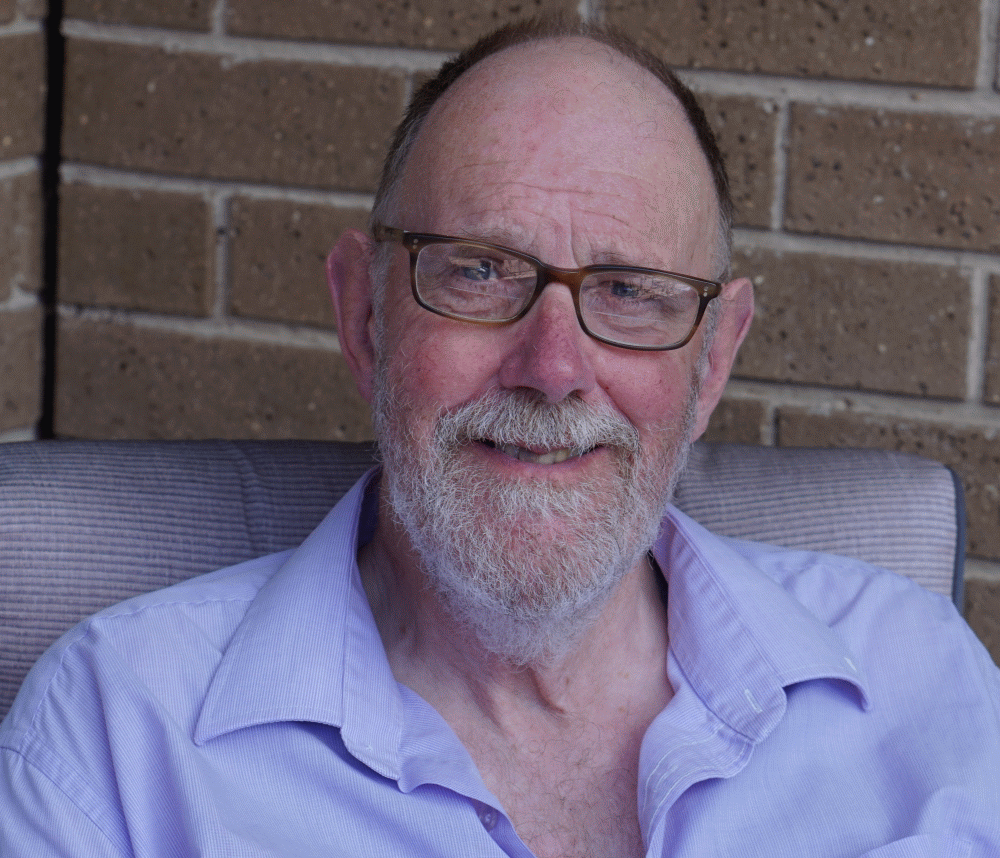Paul Thomas
Paul is a Senior Lecturer in the School of Mathematical and Physical Sciences at the University of Technology Sydney, which has now been included into the School of Civil and environmental Engineering , where he has researched the chemistry of silicates in a variety of forms from silica in autoclaved environments to the role of reactive silica in the durability of construction materials.
Investigating the character of the silica in opal has been a special interest over the last 20 years and, as a materials chemist, Paul has been investigating the chemical, physical and microstructural properties of opal.
The aim of the work has been to identify the structure and morphology of the hydrous silica with a view to relating the structure and morphology to the environment in which opal is formed and once the material has been mined, to understanding its stability with respect to whitening, crazing and cracking.
Paul gained his Batchelor of Science (BSc(Hons)) at the Kings College in London UK, graduating in 1989, and then obtaining his PhD at the Imperial College in London in 1993. Apart from research on Australian (and other) opal , Paul’s scientific work has included research involving Construction materials, Inorganic materials Physical properties of materials, macromolecular and materials chemistry and materials engineering.
One of Paul’s early interests in opal was assisting me in my opal masters thesis. During this time Paul showed his expertise in Opal as a material and brought his wonderful knowledge of chemistry and material science to investigating opal. Paul and our other collaborators have spent much time traveling the opal fields in the Australian outback on many occasions, and relating science and scientific investigations with opal miners and others all through the Australian opal fields. Paul has also presented papers at conferences in his specialised field overseas.
The current investigations Paul and opal academy are working on are:
The structure of opal spheres and the incorporation of water in the structure using facilities at ANSTO including the Australian Synchrotron, in Melbourne, and the Neutron Beam facilities at Lucas Heights, OPAL reactor. Much experimentation is being worked on with more publication of data anad investigations to be presented soon.
1. “Characterisation of Australian Opals by Fourier Transform Raman Spectroscopy”, A.G. Smallwood, P.S. Thomas and A.S. Ray, Spectrochimica Acta, 53A (1997) 2341-2345.
2. “Thermal Characteristics of Australian Sedimentary Opals”, L.D. Brown, A.S. Ray, P.S. Thomas and J.P. Guerbois, J. Thermal Anal., 68 (2002) 31-36.
3. “29Si and 27Al NMR Study of Amorphous and Paracrystalline Opals from Australia”, L.D. Brown, A.S. Ray and P.S. Thomas, J. Noncrystalline Solids, 332 (2003) 242-248.
4. “Elemental Analysis of Australian Amorphous Opals by Laser-Ablation ICPMS”, L.D. Brown, A.S. Ray and P.S. Thomas, Neues Jahrbuch fur Mineralogie Monotshefte, Volume 2004 Number 9 (2004) 411-424.
5. "A SIMS Study of the Transition Metal Element Distribution Between Bands in Banded Australian Sedimentary Opal From the Lightning Ridge Locality", L.D. Brown, P.S. Thomas, A.S. Ray and K. Prince, Neues Jahrbuch fur Mineralogie Monotshefte, (2006) 182(2), 193-199.
6. “Estimation of the Diffusion Coefficient of Water During the non-isothermal Dehydration of Australian Sedimentary Opal”, P.S. Thomas, P. Šimon, A. Smallwood, A.S. Ray, J. Thermal Anal. Cal., (2007) 88(1), 231-235.
7. “TMA and SEM Characterisation of the Thermal Dehydration of Australian Sedimentary Opal”, P.S. Thomas, A. Smallwood, A.S. Ray, P. Šimon, J. Thermal Anal. Cal., (2007) 88(1), 185-188.
8. “Nanoindentation Hardness of Banded Australian Sedimentary Opal”, P.S. Thomas, A.S. Smallwood and A.S. Ray, B.J. Briscoe and D. Parsonage, J. Phys. D, 41(7) (2008), 074028 (doi:10.1088/0022-3727/41/7/074028).
9. “Thermal Characterisation of Australian Sedimentary and Volcanic Precious Opal”, A.G. Smallwood, P.S. Thomas and A.S. Ray, J. Therm. Anal. Cal., (2008) 92(1), 91-95.
10. “Comparative Analysis of Sedimentary and Volcanic Precious Opals from Australia”, A.G. Smallwood, P.S. Thomas and A.S. Ray, J. Aust. Ceram. Soc., 44(2) (2008) 17-22.
11. “Application of a Fickian model of diffusion to the dehydration of graded specimens of a precious Australian sedimentary opal derived from Coober Pedy”, A. Smallwood, P.S. Thomas, A.S. Ray, P. Šimon, J. Therm. Anal. Cal., 97 (2009) 685-688, DOI 10.1007/s10973-009-0076-6.
12. “Thermal Properties of Australian Sedimentary Opals and Czech Moldavites”, P.S. Thomas, K. Heide, J. Šesták, E. Füglein, P. Šimon, J. Therm. Anal. Cal., 99 (2010) 861-867.
13. “Low temperature DSC characterisation of water in opal”, Thomas P.S., Guerbois J.P. and Smallwood A., J. Therm. Anal. Cal., 113(2) (2013), 1255-1260.
14. “Water and hydrogen release from perlites and opal; A study with a directly coupled evolved gas analyzing system (DEGAS)”, P. S. Thomas, K. Heide and M. Földvari, J. Therm. Anal. Cal., 120 (2015), 95–101.
15. “DSC of natural opal: insights into the incorporation of crystallisable water in the opal microstructure”, Boris Chauviré and Paul Thomas, Journal of Thermal Analysis and Calorimetry, (2020) 140:2077–2085, https://doi.org/10.1007/s10973-019-08949-4.
16. “FT-NIR and DSC characterisation of water in opal”, Paul Thomas, Boris Chauviré, Katharine Flower-Donaldson, Laurie Aldridge, Anthony Smallwood, Barry Liu, Ceramics International, 46 (2020) 29443-24950, available online: https://doi.org/10.1016/j.ceramint.2020.05.026.










